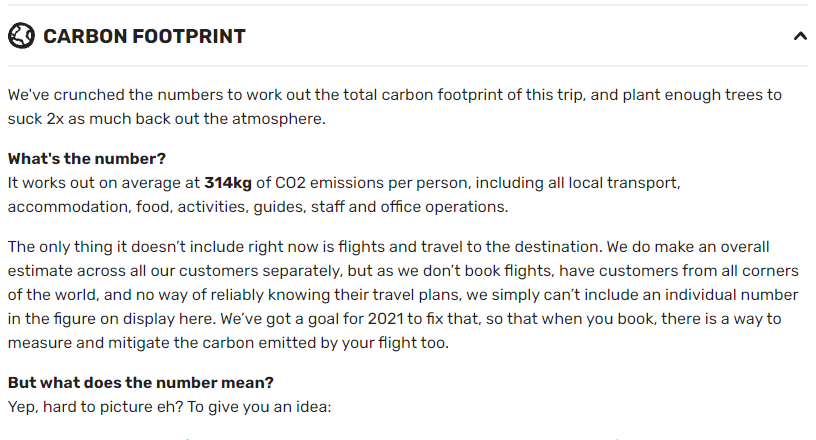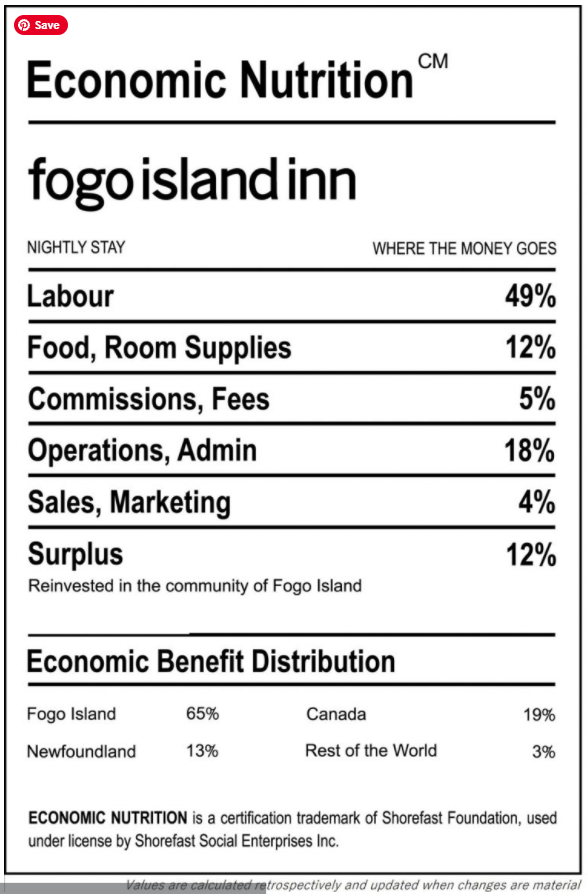Gone are the days when brands could just crank out products and services, then sit back as sales rolled in. More people are becoming conscious consumers, and they expect brands to consider people, planet, and profit. They want the companies they support to stand for something far more than the products they buy and the services they use.
According to a recent BBC Global News study:
- 81% of consumers believe that brands clearly demonstrating a commitment to sustainability adds value to a brand.
- 79% say sustainable practices and commitments are an important consideration when making purchase decisions.
- 68% are willing to pay more for brands with strong sustainability and eco-friendly practices.
Communicating your sustainability story has never been more important. In the tourism industry, that is especially true. I am a skeptic of Booking.com’s data related to sustainable travel. However, numerous studies show that people are becoming more conscious consumers in general, so it naturally makes sense that more people are casting a critical eye on travel brands as well.
This means that travel brands must become more transparent about everything: their climate goals, their sustainability plans, their socio-economic impact, their supply chains, their DEI commitments.
Embracing radical transparency across your travel business may sound a bit intimidating, but it is essential for businesses operating today — and it benefits your company in two meaningful ways.
First, committing to transparency means that you are making a commitment to your paying customers. You acknowledge that they have agency and lots of choices, and that you trust them to use the information you provide to help make an important decision not only about where to go but what and who their investment supports.
According to the BBC survey, 57% of consumers said they would stop buying a product they were previously loyal to if they discovered it wasn’t committed to sustainability. Leave no doubt in your consumers’ minds. Build trust with transparency.
Secondly, embracing transparency holds your company accountable for tracking progress and reporting on your commitments. So many companies are paranoid about being perfect, but companies — like people — are imperfect. They make missteps, and they occasionally fall short of their goals.
Businesses are evolving ecosystems impacted by real-world circumstances. By being transparent, you invite consumers to be part of your journey; your company, in turn, helps them understand the positive and negative impacts they have when they choose to invest in your company. You may fall short at times, but communicating about those shortcomings while still showing some progress is far more appealing to conscious consumers than a company that avoids communicating — or worse, greenwashes or misrepresents their actions.
Unsure of what radical transparency looks like? Here are three opportunities travel companies should consider.
Carbon Labels
Carbon labels, like nutrition labels, explicitly state how many carbon emissions are used in creating a product. Unsurprisingly, they first start showing up in the food industry — on products, on menus, and in grocery stores. In the past year, tour companies started publishing carbon labels on trip itineraries.
Carbon labels are a powerful form of transparency because they require companies to do the work in measuring carbon emissions across all trips and the entire supply chain. This is especially difficult in tourism because companies work with so many suppliers and partners. However, once you have this number, there is nothing left to hide behind. This number is what it is — unless you do something to change it.

This is where publishing carbon labels with trips becomes so powerful: Once you have a baseline measurement — and the world knows about it — there is an incentive to find ways to reduce your carbon footprint.
Sharing carbon emissions with potential travelers is also a subtle way of communicating about climate and your commitment to addressing it. It also empowers travelers themselves. When displayed alongside the destination, cost, departure date, etc. as another piece of relevant information, it allows them to take this into consideration to make an informed decision as a conscious consumer.
Much Better Adventures (seen in the image) not only publishes carbon labels but has also generously detailed its methodology so other companies can more easily follow suit. Also check out examples from Natural Britain and Adventure Tours UK.
Economic Benefit
Leakage happens in tourism when money does not stay in the destination travelers visit. This happens a lot when people stay in accommodations and support businesses that are multinational chain establishments. In order for tourism to have a positive financial impact on a local community, money needs to remain in the community where it is spent. This is part of the reason why the push toward more community-based experiences — locally focused tourism — is so important.
But the question remains: Where, exactly, does the money go?

Fogo Island Inn answers this question with its Economic Nutrition label, which specifies where the money goes operationally and geographically. Economic transparency like this holds travel companies accountable by ensuring they avoid local-washing. You can pinpoint down to the last dollar what goes where without question.
A lot of people might not even think much about how the money they spend is dispersed. This is not only good information for consumers to know, but it also helps travelers understand that the money they spend always makes an impact in some way. Their choices matter.
Supply Chains
Do you know which companies are part of your supply chain? Who is impacted by your business, and how? Whether the people serving your clients are treated well?
You should know all of these things — and you should feel confident enough with this reality that you’re willing to be transparent about it.
Digging into supply chains can be a time-consuming and complicated process, but taking the time to learn about who is on the backend of your business and how it operates is an essential part of being a responsible business. Spending the time to do this research will likely reveal important information as well as interesting stories about the people behind your brand. These are stories you should be sharing with people.
Transparency about supply chains is also a key piece of operating sustainably. Though it may sound a bit strange, when people place value on something, they’re more likely to treat that thing as valuable. This applies to everything from plastic water bottles to tennis shoes to travel experiences. If travelers get to know who is on the “back end” of your business, how the products they buy are made, what the story is behind the food they eat, and why you’ve chosen to work with certain activity providers over others, they are far more likely to have a greater appreciation for what they purchase. I like this example from Pala Eyewear, which turns a single pair of glasses into an entire ecosystem into a story of people, family businesses, history, and impact.

Don’t be afraid to introduce consumers to the people, the process, and even the research your company went through in sourcing its supply chain. And if you think it’s too much information, remember that consumers can choose not to engage in this information, and that is fine.
Taking the time to make this information available, though, sends a signal that you are confident in the services you offer and that you’re willing to publicly stand behind the decisions you’ve made as a tour operator. This is your way of telling the world that you embrace radical transparency.



